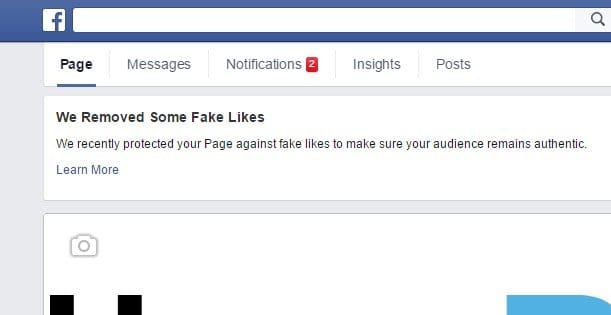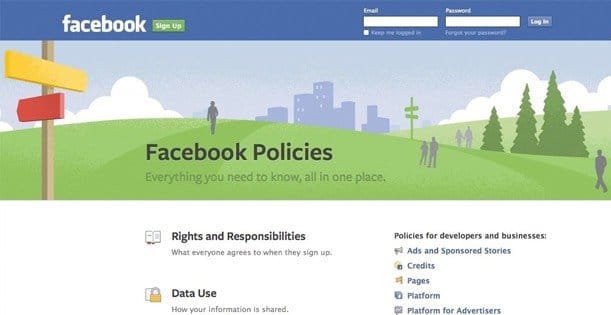 Written by ContentPowered.com
Written by ContentPowered.com
Recently, Facebook has started sending out notifications at the top of a page, visible only to the admin, when they remove fake likes from that page. This has set a number of webmasters on edge. Many believe that any loss of likes, real or fake, is a huge blow to their business. I’m going to take a moment to discuss why that’s not true, and why this is typically a good thing, no matter what percentage of your likes are removed.
Why Authentic Likes Matter
Well, for one thing, Facebook cares about the realism of their likes. If the site was overrun by fake likes, the fake like economy would crash. Where you might find one like valuable before, you might need a thousand likes for equivalent value. Pages with millions of followers would need trillions of likes on every post just to break even, and that hurts everyone.
Okay, so that’s not really what happens. However, a like on a page is supposed to signify a person – a real person – who is interested in your brand and what you have to say. When your page is full of followers, you have a wide interested audience. If your page is filled with fake likes, you might as well be delivering a seminar to a bunch of cardboard cutouts. Not only does it hurt your message to fall on fake ears; the few real followers in the crowd of fakes grow uncomfortable and leave.
Facebook also doesn’t like giving pages a workaround to their feed filtering. If they weighted likes more heavily, it would be possible for pages to purchase likes just to spread their message. In a sense, it’s because of fake likes that the individual like is as valueless as it is today.
Fake Likes and Insights
If you’re a veteran Facebook marketer, you’ll know how valuable the Insights system is. Through Insights, you can learn all sorts of interesting and useful information about your audience. You can find out where they live, in general. You can find out what they like. You can find out about their general demographic information. Most importantly, you use this information to target your ads.
Consider this scenario; you go into your Insights panel and look at your demographic information. You see that the majority of your audience is composed of young women, aged around 20, and that they tend to like various clothing brands. Use decide to use that information to target ads at other 20-something women who like clothing brands, to bring them into your audience. It works, and you bring in a number of great new followers, some of whom convert on the spot. That’s how the system is supposed to work.
Now imagine you look and you see the same information, but you notice that the majority of them come from India. This is strange, because you don’t sell your product in India. You shrug and decide to run the ads anyways. You get a whole bunch of new followers, but you see exactly zero conversions. You spent a bunch of money on ads, and got nothing out of it. It’s even worse if you spend money on other ad campaigns in India, where people don’t actually care.
Things get even worse if the fakes spoof their identities and look like they come from, say, California. Now you have a bunch of valley girls as your demographic. What if the minority, though, are your real fans? They turn out to be 40-something males who live in New York. Yet here you are, spending ad money on ads targeted at California women. Your real demographic is left ignored, while the fake demographics suck up your ad spend and give you nothing in return.
There is, of course, the matter of organic reach as well, which is severely hampered by the presence of fake fans. Every fake fans that sees your message is a real opportunity lost.
Facebook’s Best Practices
Facebook has a few suggestions on fan-based best practices.
First, they advise that you focus on business objectives, not just followers. Yes, growing your following is important, but which matters more to you? Getting an extra hundred followers on Facebook, or getting one more monthly conversion on your website? By running ads and targeting posts such that you’re encouraging conversions and blog followers, you benefit more than you would through boosting your like count for no reason.
Second, don’t buy fake likes. About half of the time when you’re buying likes online, you know they’re fake and you know what you’re getting into. Don’t do it, no matter how tempting the offer may sound. The other half of the time, the seller is trying to pass their likes off as real. They’ll just end up removed, or worse; sitting around hurting you. Only buy likes from qualified sellers, businesses that run ad campaigns on private networks to get you real followers.
Third, learn your audience. More importantly, monitor your audience and watch for trends in an unusual demographic spiking. This can be an indication of fake likes, which can come from outside sources as well as your own accidental targeting mishaps. Try to minimize the actions that cause these spikes.
Why Fake Removal is Fine
If you get the fake like removal message – something like this – consider it a good thing. Facebook has your best interests in mind! They’re removing bots, fake accounts, spam accounts, inactive accounts, and memorialized accounts from your followers list. This has a number of great effects on your brand.
For one thing, it makes your audience Insights that much more accurate. Always check your Insights after such a fake fan removal! You might find out you’ve been targeting your ads a bit left of center, and the removal allows you to refine your targeting to better contact the people who are most interested in your brand. This will probably result in a conversion rate increase, possibly as soon as days after it happens.
For another thing, it broadens your reach. When fake fans are removed, those fans aren’t soaking up your messages. Instead, real fans will see your posts, and those fans will be more likely to like, share, and comment on your posts. When they do, it exposes your posts to that many more real and potential fans, dramatically increasing your organic and viral reach.
The only negative effects that come up from the removal of fake likes are the lowering of your follower count – which isn’t that important on its own – and the loss of any investment you had in fake followers. But then, you’re a smart webmaster; you haven’t been buying fake likes at all.

